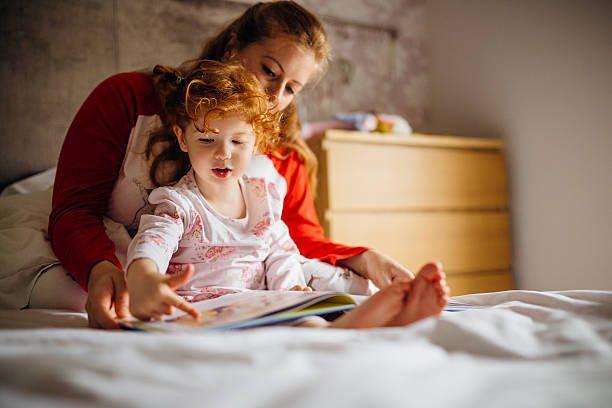Reading children’s books when you are learning Spanish can be an excellent way to expand your vocabulary and to review and learn new grammar. When we choose to read in our target language, we immerse ourselves in it and, slowly but surely, the structure of this language will become more common to us. As a result, we become more proficient in the language. It all sounds great, right? But… where do you start?
In this post, we will talk about the best children’s books for learning Spanish and how you can make the most of your learning time by actively reading.
1. Start with what you already know:
The best advice I can give you is to choose a children’s book that you have already read in your native language. Did you have a favorite book growing up? Is it a popular children’s book? Then chances are it’s been translated into Spanish!
Choosing a book you are already familiar with is a great starting point for a few reasons:
- You already know the story so you can just focus on the Spanish vocabulary.
- You are likely to enjoy it since you already like it. And therefore, you are likely to finish it.
- You won’t need to stop as often to look up words. It will be easier to draw the meaning of the words since you already understand the context.
Popular children’s books in Spanish
Here are some widely popular children’s books that I would recommend and that are available in Spanish:
– El Principito (The little prince) – Antoine de Saint-Exupéry: A well-loved classic. Originally published in French, this book has been translated into multiple languages.
If you are already familiar with the story line, you are sure to enjoy reading this lovely book in Spanish. Plus, did you know that there’s a movie as well? Watch it with Spanish audio or Spanish subtitles after reading the book. You are sure to memorize tons of vocabulary words with this experience.
– Matilda – Roald Dahl: Another worldwide favorite. This book will keep you engaged and make you laugh. Matilda follows the story of a brilliant little girl whose psychokinetic abilities help her deal with numerous difficult situations in her life at home and school. I highly recommend watching the movie in Spanish as well.
– Huevos verdes con jamón (Green Eggs and Ham) – Dr. Seuss: Originally published in 1960, this book has become one of the best-selling books in English ever written. And, you guess it, it is (of course) available in Spanish. This is a great little book to practice simple vocabulary. Dr. Seuss books are well-known and available in different languages. So if you love many of them, they are an excellent way to kick start your Spanish reading habit.
Are you planning to purchase any of these books? Then practice highlighting new words. Underline full sentences, practice writing your own sentences in the margins. Make the most of it.
2. The power of the short story:
Argentinian writer Julio Cortazar once said that while the novel wins by points, the short story wins by knockout. Short stories are an excellent way to ease your way into reading in Spanish as they are short and sweet.
In actuality, there is no need to commit to reading a full, lengthy book in Spanish. In fact, it could be overwhelming and you might not be able to finish it if you are just getting started. So instead, why not start small and choose short stories?
Here are some recommendations:
Famous short stories translated into Spanish:
-
- El cuento de la caperucita roja (Little Red Riding Hood)
- Los tres cerditos (Three little pigs)
- El patito feo (The ugly duckling)
- Blancanieves y los siete enanitos (Snow white and the seven dwarfs)
- Hanzel y Gretel “La casita de chocolate”.
- Peter Pan
And many more…
Popular short stories for children originally written in Spanish:
- El niño y los clavos.
- El cumpleaños del señor León.
- Alboroto en la cocina.
- El conejo de las orejas largas
These are just a few of the popular Spanish short stories. There are many more available online in various free websites where you can read them at no cost.
3. Choose stories that interest you:
This is key to learning Spanish and practicing it efficiently. It is not enough to simply choose a book because it is in Spanish. Choose a story that interests you.
Make sure that whatever you decide to read keeps your attention. This is important because you are more likely to remember the vocabulary you learn and to want to continue reading.
Great books that also have bilingual editions:
Here, you’ll find a short list of books that are not only interesting but also available in a bilingual version. This will speed up your learning process and keep you engaged in the story:
- Me llamo Celia (My name is Celia) by Monica Brown: This colorful and charming little book tells the story of the life and work of the beloved salsa legend Celia Cruz. Find it here.
- Mi diario de aquí hasta allá (My diary from here to there) by Amada Irma Pérez: This book explores the complex topic of immigration. It tells the dramatic story of a Mexican family that migrates to the United states, all from the perspective of a little girl.
- Luna, Lunita, Lunera (Moony Luna) by Jorge Argueta: It tells the story of a 5 year old girl who does not want to go to school. Great for absolute beginner Spanish learners.
- Ábrete Grano Pequeño by Horacio Benavides: This book is a collection of riddles or adivinanzas (as we call them in Spanish). Riddles are always thought-provoking, fun, and easy to read. This book is free and available online in PDF form.
- Petit El Monstruo by Marisol Misenta: A captivating story about a contradictory kid who sometimes follows the rules and sometimes breaks them. This is his journey to understanding why.
- Un castillo de libros by Susana Aristizábal: This is a book about books and the fascinating stories they hold. It tells the story of what happens inside a library.
So there you have it! I hope you have found your next book in Spanish here or that, at least, you have found some inspiration on how to find your next favorite Spanish read.
Comment below if you have read any of these books! What other books in Spanish would you recommend readers?
Isabel Solano


